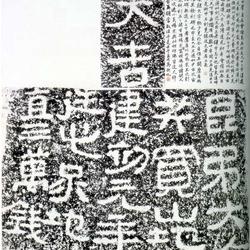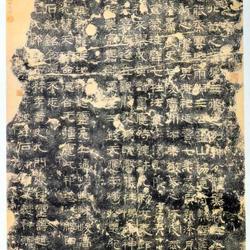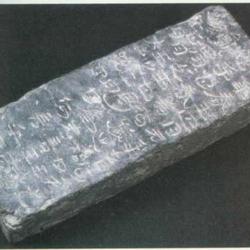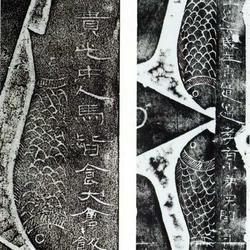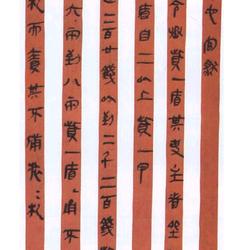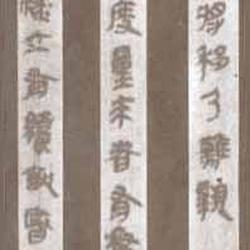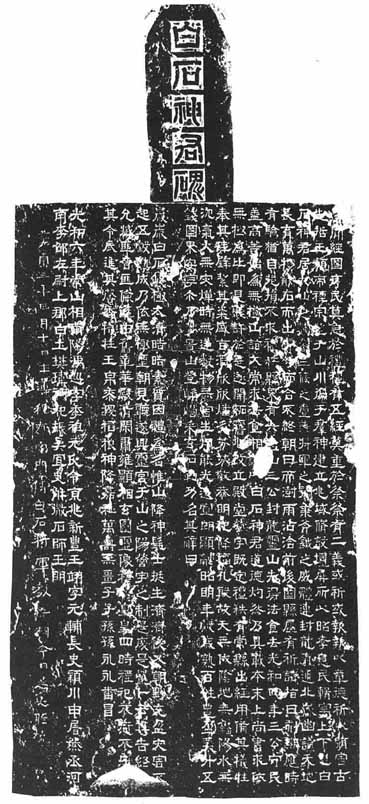
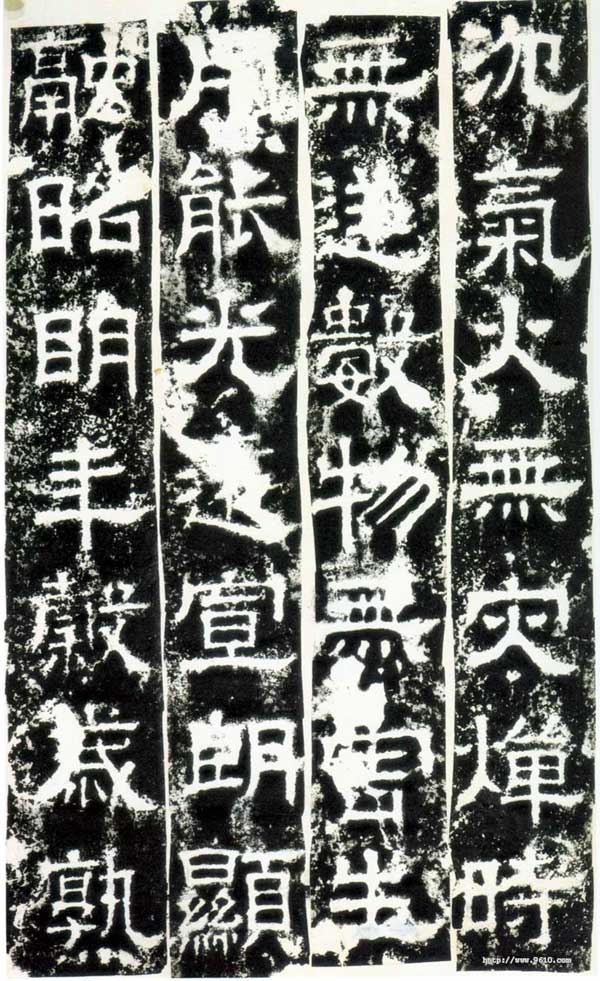
"White Stone Divine Monument" (detail)
Eastern Han Dynasty official script inscription. The inscribed seal on the forehead is "White Stone Monument of the Divine Lord". There is an inscription on the stele. It was established in the sixth year of Guanghe (183). The monument was originally located at the Baishi Shenjun Temple in Suzhuang, thirty miles northwest of Yuanshi County, Hebei Province, at the foot of Fenglong Mountain. It was later moved to the county school. "Jin Shi Cui Bian" records: the stele is five feet four and a half inches high, three feet three inches wide, with a total of sixteen lines, and a full line of thirty-five characters. The stele has three columns, the upper column is four rows behind the forehead, the middle column is twelve rows, and the lower row is eleven rows.
This stele has a square knot structure, slightly longer fonts, clear and vigorous writing, and obvious ripples. It is a careful and well-organized work. There has always been controversy as to whether this stele was written by Han people, and evaluations of its calligraphy vary. Song Hongshi's "Li Shi" says: "The Han people were divided into liars, and those who were inherently unworkable were either clumsy or strange, and all had ancient meanings. Although this stele is neatly arranged, there is no trace of Chinese characters, and it is similar to the steles of the Wei and Jin Dynasties; although There are light and dates, or later generations re-engraved them with old characters." Qing Weng Fang Gang believed: "It is the stele calligraphy that specializes in Fangzheng, and it is the cleanest and neatest among the Han scribes. However, the strong character and strength seem to be especially reflected in "School Officials" "The stele" is based on the official law, and we should not doubt it because it is similar to Liulang and Tang people." Wan Jing's "Fen Li Oucun" states that the stele does not have an inscription in the third year of Yan Yuanxi's reign (354) before Murong Qian, and also believes that "Yuan Xi's death" During the Guanghe period for more than 170 years, there may not have been any re-engravings in the meantime. If anyone came after Yuan Xi, they would definitely not be willing to inscribe the name and copy it." Guo Shangxian's "Fangjian Pavilion Inscription and Postscript" said: "The "White Stone Shenjun Stele" is suspected to be Han Dynasty. The stele has been severely scrutinized by later generations, but Cheng Zhi’s calligraphy is clear and simple, so the cutting of this stele was not done by Jin people. Han people’s original calligraphy cannot be completed in one piece, that is to say, the method of tying this stele must be rigorous." Yang Shoujing's postscript Yun: "...I believe that this stele is truly the lowest among the Han dynasties, but how do you know it is not from the Wei and Jin Dynasties?"
Among the rubbings passed down from generation to generation, the ones with the words "高高 grain Qing bandit" and other characters intact are considered old. For details, see "Essays on the School Stele".

